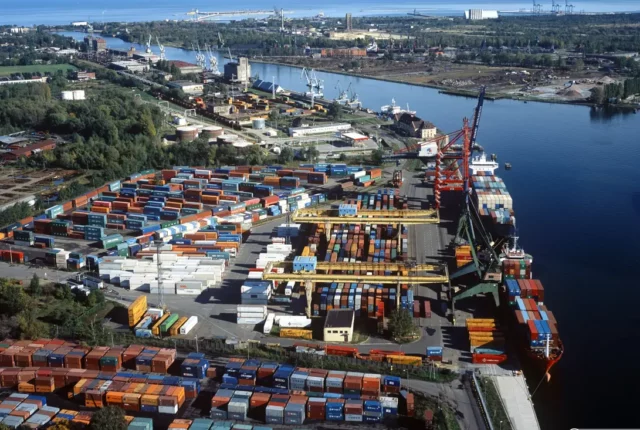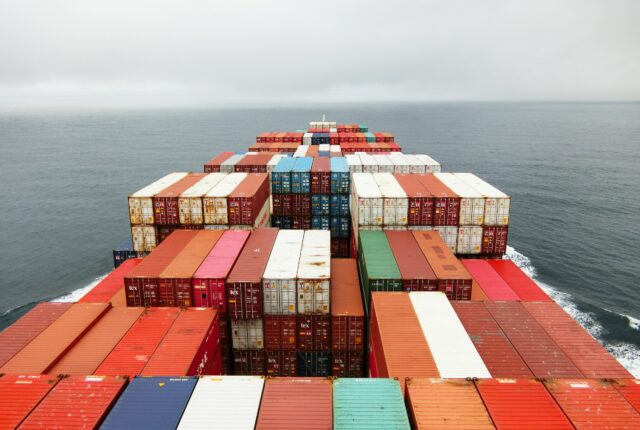
Rail vs Road: Best Freight Forwarding Options Explored
When it comes to moving goods, the choice between rail and road isn’t just a matter of preference—it’s about efficiency, cost, and impact. Imagine you’re planning a big move. Would you pack everything into a single car trip, or make several trips back and forth? This analogy gets us thinking about the bigger picture in freight forwarding.
The Speed Factor: Rail vs Road
Rail freight is like the express train of freight forwarding. It’s generally faster over long distances, where trains barrel through uninterrupted by traffic jams or road works. Road freight, on the other hand, offers the agility to navigate through local streets, making it ideal for shorter distances or deliveries that require a personal touch.
Cost-Effectiveness: Calculating the Savings
When we talk about saving pennies, rail often takes the lead for bulk shipments over long hauls. The economies of scale are hard to beat. However, road transport can be more cost-effective for smaller deliveries or when flexibility is key. It’s like choosing between wholesale shopping and buying just what you need from the local store.
Environmental Impact: Green Logistics
In the green corner, rail transport packs a punch with lower carbon footprints compared to road haulage. It’s akin to riding a bike versus driving a car to work. If we’re looking at reducing emissions and playing our part for the planet, rail offers a more sustainable route.
Capacity and Convenience: Size Does Matter
Railways can handle a massive volume of goods in a single journey, making them the heavyweights of freight transport. Roads offer less capacity per vehicle but win in the convenience department, delivering goods directly to the doorstep without the need for transfers.
Reliability and Accessibility
Rail systems are less affected by weather conditions and traffic, offering more predictability in schedules. However, roads provide unparalleled access to remote areas where trains fear to tread. It’s a balance between the reliability of a set timetable and the flexibility of going off the beaten path.
Safety First: Risk Management
Rail transport is statistically safer for heavy and hazardous materials, with lower chances of accidents and spillages. Roads, while versatile, pose higher risks due to the unpredictable nature of traffic and road conditions.
Flexibility in Operations
The road network’s true strength lies in its flexibility, adapting to last-minute changes and direct routes. Rail, though efficient, is bound by fixed schedules and routes, offering less wiggle room for spontaneous planning.
The Last Mile: Connectivity Challenges
The Achilles’ heel of rail transport is the last mile—getting goods from the railhead to the final destination. Roads excel in this area, providing door-to-door service that rail simply can’t match without additional road transport.
Future Prospects: Innovations and Trends
The future of freight is exciting, with innovations in both rail and road transport aiming to increase efficiency, reduce costs, and minimize environmental impacts. From autonomous trucks to high-speed rail, the landscape of logistics is evolving.
Making the Right Choice for Your Cargo
Deciding between rail and road boils down to the specific needs of your shipment. Consider distance, cost, volume, and urgency to determine the best mode of transport for your goods.
In the rail vs road freight debate, there’s no one-size-fits-all answer. Each mode has its strengths and weaknesses, and the best choice depends on the specifics of the freight being moved. By understanding these nuances, freight forwarders can make informed decisions that optimize their operations, save costs, and reduce environmental impacts.
FAQs
Which is faster for cross-country shipping, rail or road?
Rail is generally faster and more efficient for long-distance, cross-country shipping due to its uninterrupted travel paths.
Can road transport compete with rail in terms of cost for bulk shipments?
For bulk shipments over long distances, rail is typically more cost-effective due to economies of scale. However, road transport can be competitive for shorter distances or smaller volumes.
How do rail and road transport compare in terms of environmental impact?
Rail transport is more environmentally friendly than road, producing lower greenhouse gas emissions per ton-mile of freight moved.
Which mode is more reliable in terms of schedule adherence?
Rail transport tends to be more reliable in terms of schedule adherence, as it is less affected by weather conditions and traffic congestion.
Can road transport effectively handle the last mile of delivery for rail shipments?
Yes, road transport is often used to complete the “last mile” of delivery for rail shipments, providing the flexibility and accessibility that rail lacks in reaching final destinations.






